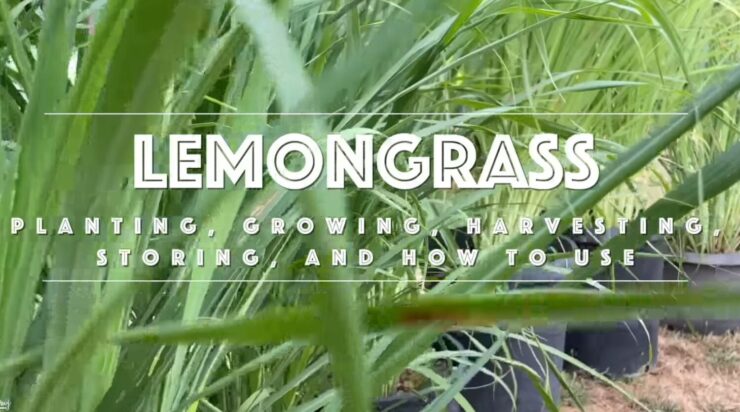Lemongrass is a versatile and fragrant herb that is commonly used in cooking and herbal medicine. It is also easy to grow and maintain, making it a popular addition to home gardens. In this article, we will explore how to grow, harvest, divide, and use lemongrass. We will cover everything from planting and caring for lemongrass to harvesting and storing it for later use. We will also share some delicious recipes and home remedies that feature lemongrass as a key ingredient. Whether you are a seasoned gardener or just starting, this guide will provide you with all the information you need to cultivate and use this delightful herb.
Growing Lemongrass
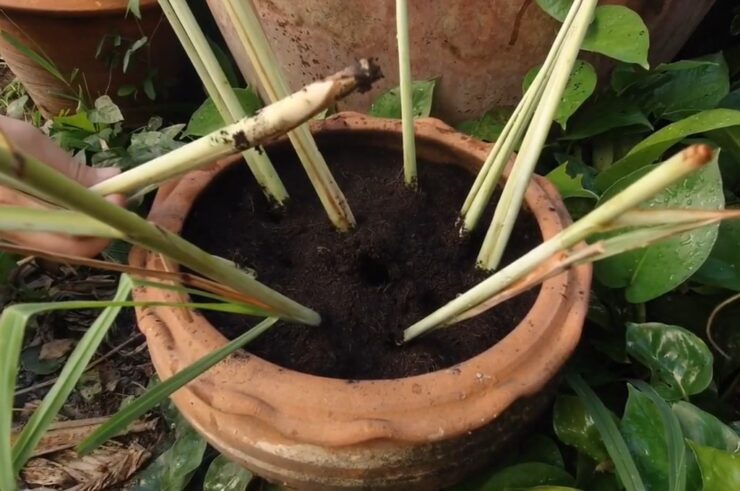
Lemongrass is a fragrant and flavorful herb that has many health benefits. It grows well in warm conditions and is relatively easy to cultivate in many parts of the world.
Choosing the right location to grow lemongrass
Choosing the right location to grow lemongrass is crucial for a bountiful and healthy harvest. Here are some tips to help you choose the perfect location:
- Climate and Temperature: Lemongrass thrives in warm and humid climates with temperatures ranging from 70-85°F (21-29°C). Make sure the location is not exposed to strong winds or frost.
- Sunlight and Soil: It needs at least 6-8 hours of direct sunlight every day. Choose a location with well-drained soil with a pH between 6.5 to 7.5.
- Water and Humidity: It requires moist soil and high humidity to grow properly. Make sure to water the plants often and consider using a humidifier if you live in a dry climate.
- Pests and Diseases: Lemongrass is susceptible to a variety of pests and diseases, so it’s important to choose a location with good air circulation and monitor your plants for any signs of problems.
Remember, choosing the right location is just the first step in growing healthy and flavorful plants in your home garden. Don’t forget to fertilize, prune, and harvest it as needed to keep it thriving!
Preparing the soil for lemongrass planting
A crucial step to successful lemongrass planting is preparing the soil to ensure your plants have the nutrients they need to grow strong and healthy. Follow these steps to prepare your soil for planting:
- Choose a well-drained area: It thrives in well-drained soil that is not waterlogged. Select a spot that gets plenty of sunlight and has good drainage.
- Clear the area: Remove any weeds or debris from the area where you plan to plant your lemongrass. Break up the soil using a garden fork or tiller.
- Add compost or organic matter: Enrich the soil with compost, manure, or other organic matter to improve nutrient content and promote soil health. Mix it in thoroughly to a depth of 6-8 inches.
- Test the soil pH: Use a soil test kit to determine the pH level of your soil. It needs a pH between 6.0-7.5 to grow optimally. Amend the soil according to the instructions on the test kit if necessary.
- Water the soil: Water the soil thoroughly but do not make it waterlogged. Plant it and water it deeply once a week or when the soil is dry to the touch.
Pro tip: If you plan to use it for cooking, avoid using pesticides or chemical fertilizers on the plants. Instead, use organic methods for pest control and fertilizer.
Planting lemongrass from seed or starter plants
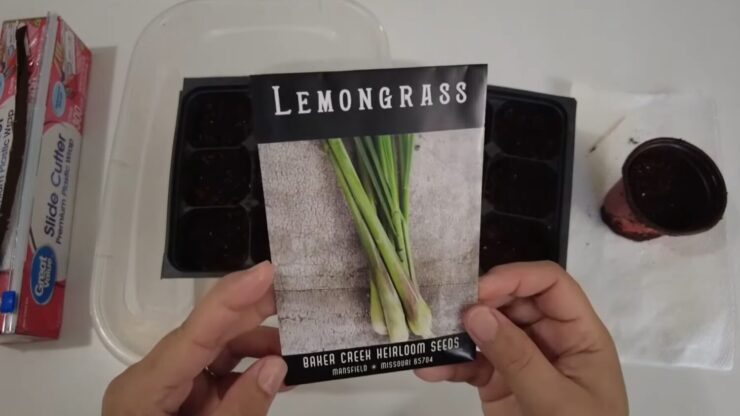
Growing it can be done from seeds or starter plants, and both methods are simple to follow. Here’s how to do it:
Planting from seeds:
- Fill a seed tray with well-draining soil.
- Sprinkle the seeds on the surface of the soil.
- Lightly cover the seeds with soil.
- Water the tray and place it in a warm and sunny location.
- Keep the soil moist until the seedlings appear, then water as needed.
- Transplant the seedlings into larger pots or planting beds once they reach 6-8 inches in height and have developed several blades of grass.
Planting from starter plants:
- Dig a hole twice as wide as the pot of the starter plant.
- Gently remove the plant from the pot and loosen the roots.
- Place the plant in the hole and backfill it with soil.
- Water thoroughly and mulch around the base of the plant.
- It thrives in full sun and well-draining soil.
- It needs regular watering and nutrients to grow.
Caring
It is important to understand how to grow, harvest, divide, and use lemongrass to get the most out of this versatile plant. Let’s take a look at the best practices for caring for it so that you can make the most of this herb.
Watering and irrigation needs
Watering Frequency: It requires adequate watering, but avoid overwatering. In general, watering 2-3 times a week will ensure healthy growth.
Irrigation: Drip Irrigation or soaker hoses are the most effective irrigation methods for lemongrass. They provide consistent moisture to the roots without causing excess moisture on the foliage.
Soil Drainage: It grows best in well-draining soil. Poor drainage can lead to root rot and stunted growth. Consider amending the soil with compost to improve drainage.
Mulching: Mulching around the lemongrass plant can help retain moisture in the soil and reduce watering needs.
Fertilization requirements
- Nitrogen: Lemongrass thrives in soil that is rich in nitrogen, a mineral that promotes the growth of leaves, stems, and roots. Adding nitrogen-rich fertilizers like blood meal, fish emulsion, or alfalfa meal to the soil can help boost its growth.
- Phosphorus and Potassium: Along with nitrogen, it requires a steady supply of phosphorus and potassium to grow healthy and produce maximum yield. Phosphorus promotes the growth of roots and flowers, while potassium helps build plant resistance against pests and diseases. Adding bone meal or rock phosphate for phosphorus and potash for potassium to the soil can be beneficial for the plant.
- Organic fertilizers: Organic fertilizers like compost or worm castings can also be used to provide the necessary nutrients to it. These fertilizers are rich in essential minerals and create a healthy soil environment for the plant to grow. Pest and disease management for lemongrass Effective pest and disease management is essential for maintaining healthy lemongrass plants.
Here are some tips for caring for your lemongrass and keeping pests and diseases at bay:
- Preventing Diseases: It is susceptible to fungal and bacterial infections, especially when grown in damp conditions. To prevent diseases, make sure you plant your lemongrass in well-drained soil, avoid overwatering, and provide good air circulation around the plants.
- Controlling Pests: Common pests that can attack lemongrass include aphids, spider mites, and mealybugs. These can be controlled by regularly spraying the plants with a neem oil solution or insecticidal soap.
- Harvesting Practices: Always harvest it with clean and sanitized tools, as a plant can become infected through open wounds. Following these simple tips can keep your lemongrass plants healthy and productive for years.
Harvesting and Storing
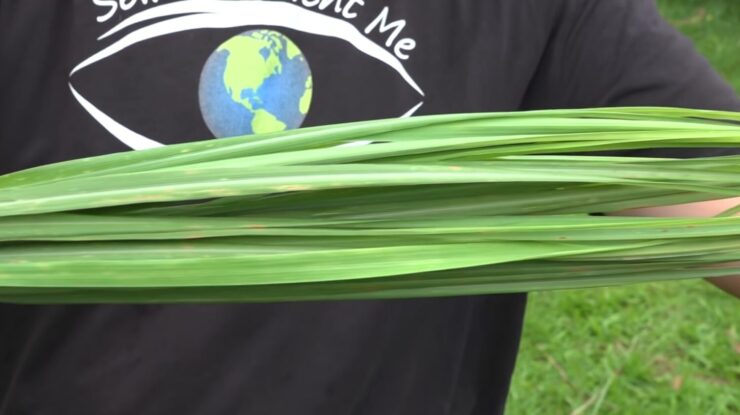
Harvesting and storing it can provide plenty of aromatic and flavorful ingredients for your cooking. It typically has a harvest season of around six weeks, depending on the variety. When harvesting, it is best to cut the stalks near the base of the plant. The best way to store lemongrass is to wrap it in a damp paper towel and put it in a bag in the refrigerator. Let’s discuss how to harvest and store lemongrass.
When and how to harvest lemongrass
Harvesting it at the right time and using the proper technique can help you get the most flavor and aroma out of your herb. Here’s a quick guide on when and how to harvest your lemongrass:
- Look for stalks that are at least 1/2 inch thick and have a pale yellow color.
- Use a sharp knife or scissors to cut the stalks close to the base of the plant.
- Remove the outer leaves and trim the tops and bottoms of the stalks.
- Wash the stalks in cold water and chop them finely for cooking or freezing.
- You can also air dry your whole stalks of lemongrass by hanging them upside down in a dry and well-ventilated area.
- Dry stalks can last for up to six months when stored in an airtight container away from light and moisture.
With this technique, harvesting and storing all that lovely aroma and taste is easy as a breeze.
Preparing and storing fresh lemongrass
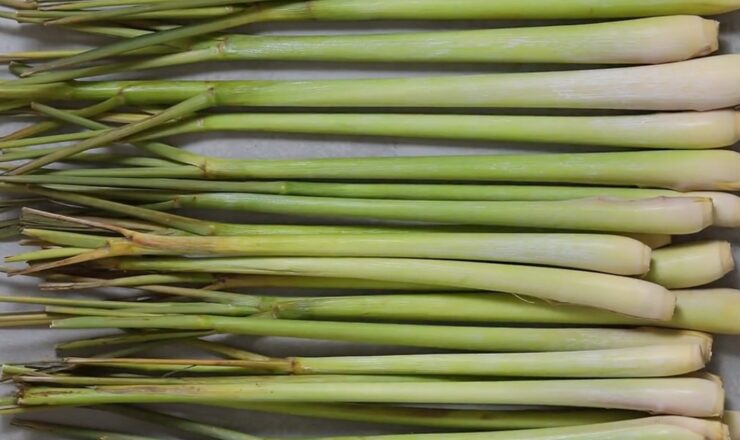
Harvesting and storing lemongrass is essential to keep it fresh and flavorful for use in cooking and other applications. Here are a few tips to prepare and store fresh lemongrass:
Cleaning: Remove any dead or dried parts of the leaves and wash the stalks thoroughly with cold water.
Storing: There are two ways to store lemongrass- refrigeration and freezing.
For short-term storage, wrap the stalks in a damp paper towel and store them in a sealed plastic bag in the refrigerator. For long-term storage, freeze the stalks by cutting them into small pieces and storing them in an airtight container in the freezer. Remember to remove the fibrous outer layer of the stalks before cooking. According to a study, prolonged storage of lemongrass should be avoided as it leads to decreased concentrations of certain compounds.
Drying and preserving lemongrass
Drying and preserving lemongrass can be done easily at home without any special equipment or ingredients. Follow these simple steps to get started:
- Harvest fresh lemongrass stalks by cutting them at the base of the plant using a sharp knife or pruning shears.
- Clean the stalks by removing the outer layers and any dry or dead leaves.
- Cut the stalks into smaller pieces, about 6-8 inches long.
- Tie the pieces together in bundles using cotton twine, leaving enough space between each stalk for air to circulate.
- Hang the bundles upside down in a cool, dry, and well-ventilated area away from direct sunlight.
- Allow the lemongrass to air dry for about 2-3 weeks, or until the stalks are completely dry and the leaves are crispy.
- Once dry, remove the leaves from the stalks and store them in an airtight container in a cool and dry place.
- You can also crush the leaves and store them as a powder to use as a seasoning in various dishes.
Dividing and Transplanting
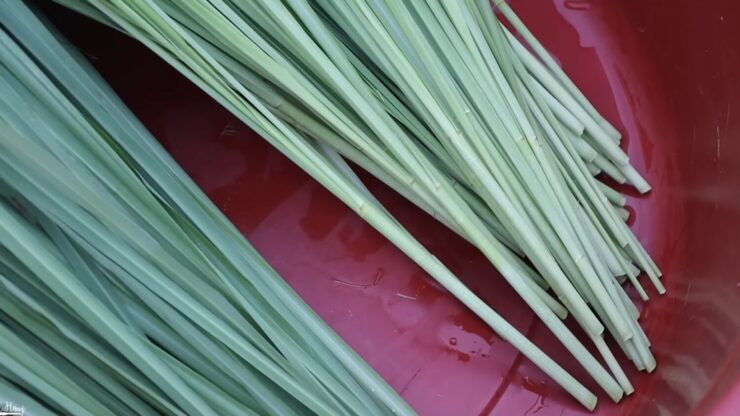
Transplanting lemongrass is a great way to add flavor to your culinary dishes, but it can also become an important part of your gardening plans. It can be a great way to increase the number of plants you have. In this section, we will discuss how to successfully divide and transplant lemongrass.
When to divide lemongrass clumps
Lemongrass is a rapidly growing herb that requires periodic division to maintain its health and vigor, but the timing for dividing your clumps is crucial for the success of the transplant. Here are some tips to follow to determine when to divide your lemongrass:
- Spring is the best time to divide your lemongrass as the plant emerges from dormancy and begins to actively grow.
- Look for clumps that are too large for their pot or planting area or if the center of the clump looks dead, dry, or unhealthy.
- Use a sharp, clean pair of shears to clip off any dead, damaged, or dried-up leaves from the bottom of the clump.
- Gently remove the entire clump from its pot or planting spot and divide it into two to four smaller clumps using a clean, sharp knife or pruning shears.
- Replant the smaller clumps in a new pot or planting area and keep them well-watered and in a partially shaded area for the first week after transplant.
Pro tip – You can use a rooting hormone powder on the cut parts to help the new plants establish more quickly.
How to divide and transplant lemongrass
Dividing and transplanting lemongrass is a straightforward process that can help control the plant’s size and increase your yield. Here are the steps to follow:
- Start by digging up the clump, being careful not to damage the roots. Use a sharp knife or garden shears to cut the clump into smaller sections, each with at least one healthy root system and a few stalks of leaves.
- Fill a container with well-draining soil mixed with compost and water until the soil is moist but not waterlogged.
- Plant each lemongrass section in the container, ensuring that the plant’s base is at the same level as the soil surface.
- Water the plants thoroughly, and place them in a sunny area with partial shade. Water regularly and fertilize every few weeks for the best results.
Pro tip: Harvest it by cutting the outer stalks close to the base, leaving the inner stalks to continue growing.
Caring for newly transplanted lemongrass
This is crucial to ensure its successful growth and development. Here are some tips to follow:
- Watering: Water newly transplanted lemongrass immediately after planting to help settle the soil. Then, water every few days to keep the soil consistently moist, but not waterlogged.
- Sunlight: It requires full sunlight to grow, so plant it in a spot where it will receive at least 6 hours of direct sunlight daily.
- Fertilization: Use nitrogen-rich fertilizer to help your lemongrass thrive. Apply it a few weeks after planting and once a month thereafter.
- Mulching: Add a layer of organic mulch around the base of the plant to help retain moisture, suppress weeds, and regulate soil temperature.
- Pruning: Remove any dead or damaged leaves, and cut back the young shoots by half to encourage growth.
With good care, your newly transplanted lemongrass will thrive and reward you with its fragrant leaves and tasty stalks.
Using Lemongrass in the Kitchen and Home
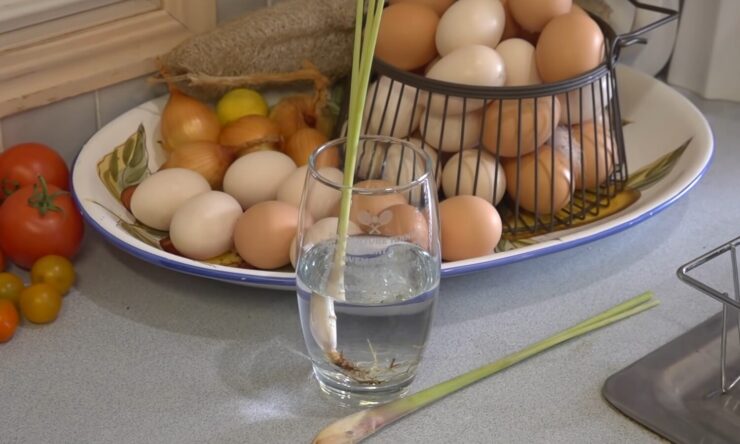
Not only can it be used to flavor dishes like curries, soups, and teas, but it can also be used as a natural insect repellent and to make homemade cleaning products.
Culinary uses for lemongrass
This is a versatile herb that adds a fresh, citrusy flavor to many dishes. Here are some culinary uses for it:
- Lemongrass tea: A soothing tea made by steeping fresh or dried stalks in hot water. For an added floral note, try brewing lemongrass tea with dried marigold flowers for a refreshing and soothing drink.
- Curry pastes: It is a crucial ingredient in many Southeast Asian curry pastes, providing a zesty flavor and fragrant aroma.
- Soups and stews: It adds brightness and depth of flavor to broths, soups, and stews.
- Stir-fries: Chopped lemongrass can be added to stir-fries, providing a tangy and herbaceous taste. Marinades and dressings: It can enhance the flavors of marinades and dressings, especially when paired with other fresh herbs.
- Desserts: They can be used to add a unique and exotic flavor to desserts, such as ice cream, sorbets, and custards. To grow lemongrass, plant the stalks in a well-drained area with full sun exposure.
To harvest, cut the stalks at the base and remove the outer layers to reveal the tender white part.
To divide the plant, separate the root clump into smaller sections and plant in individual pots.
Using lemongrass in herbal teas and infusions
Lemongrass is an aromatic herb that is commonly used in herbal teas and infusions due to its citrusy and refreshing flavor. Here are some tips on how to use lemongrass in your tea:
- Cut off the top, woody portion of the lemongrass stalk and remove any tough outer leaves.
- Crush the remaining stalk with a mortar and pestle or a rolling pin to release the oils.
- Add the crushed stalk to a teapot or a cup.
- Pour boiling water over the lemongrass and let it steep for 5-10 minutes.
- Strain the tea and add honey or lemon juice to taste, if desired. It can also be used to infuse other dishes such as soups, curries, and marinades.
- To grow lemongrass at home, plant the stalks in fertile, well-drained soil in a sunny spot and water frequently.
- Harvest the stalks when they are about 1 foot tall by cutting them with a sharp knife near the base of the plant.
- To divide the plant, gently pull apart the clumps and replant them in separate pots. Pro Tip: Lemongrass can also be dried and stored in an airtight container for later use.
FAQs
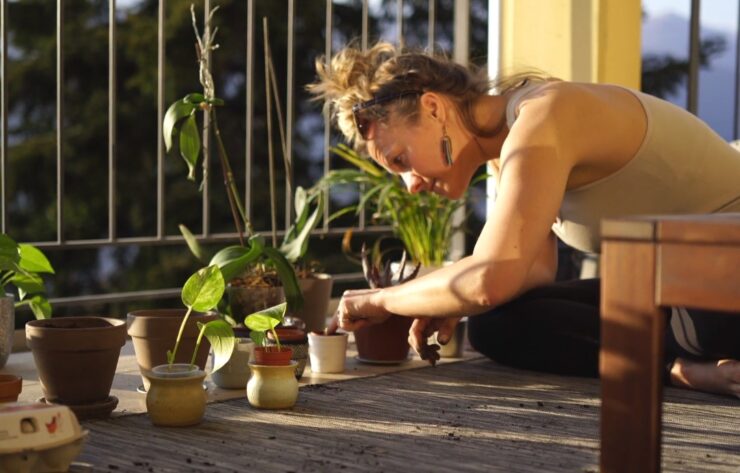
Can lemongrass be grown indoors?
Yes, it can be grown indoors as long as it has plenty of sunlight and is planted in a well-draining container.
What are some common pests and diseases that affect lemongrass?
Common pests that affect it include aphids, spider mites, and scale insects. Diseases such as fungal infections can also affect it.
How can I prevent pests and diseases from affecting my lemongrass plants?
To prevent pests and diseases, keep these plants healthy by providing proper care and avoiding overwatering. Use organic insecticides or fungicides if necessary.
How can I use lemongrass in cooking?
It can be chopped or sliced and added to soups, curries, stir-fries, and marinades. It can also be brewed as a tea.
What are some health benefits of lemongrass?
It has anti-inflammatory, anti-fungal, and anti-bacterial properties. It is also believed to aid in digestion and boost the immune system.
What are some home remedies that use lemongrass?
It can be used in home remedies for headaches, colds, and digestive issues. It can also be used as a natural insect repellent.
Conclusion
In conclusion, lemongrass is a versatile herb that is easy to grow and maintain, making it a great addition to any home garden. With proper care and harvesting techniques, you can enjoy the fragrant and flavorful benefits of lemongrass in a variety of culinary and medicinal applications. From growing and dividing lemongrass, to harvesting and using it in recipes and home remedies, this guide provides all the information you need to get started with this delightful herb. Whether you are looking to add some zest to your cooking or improve your health naturally, lemongrass is a fantastic herb to incorporate into your life.

